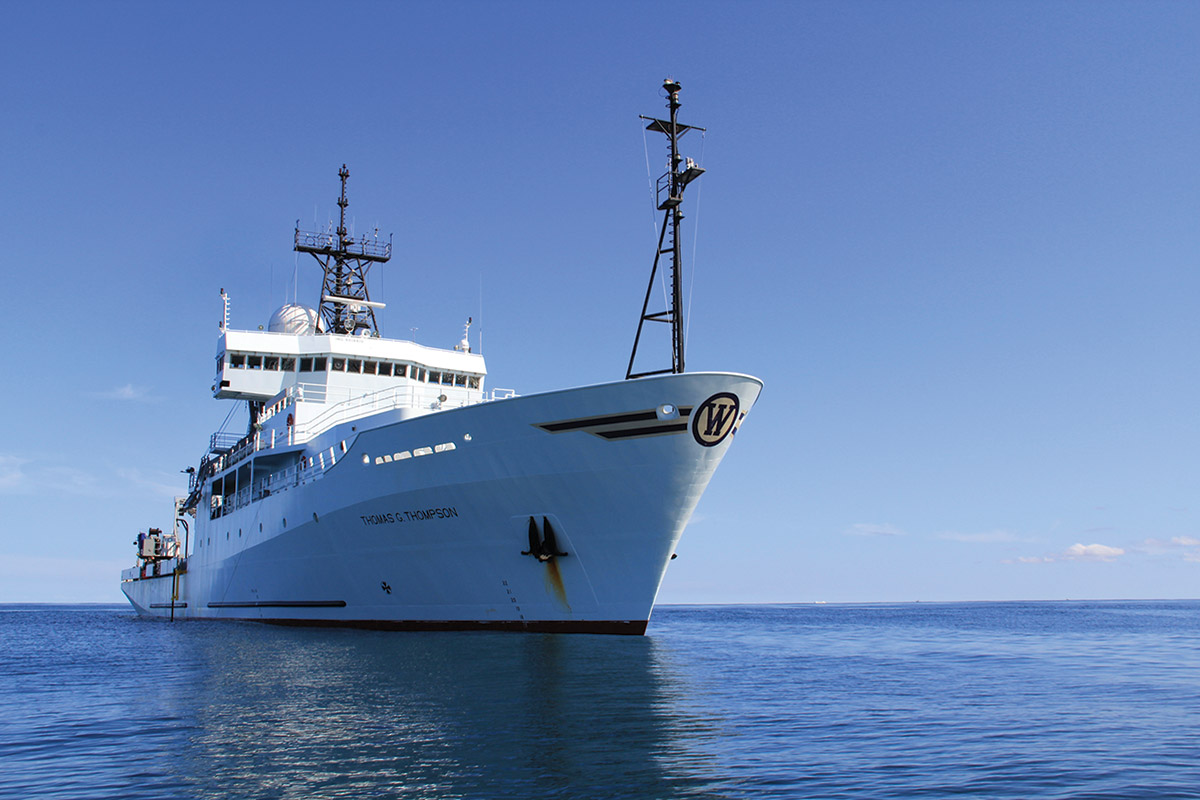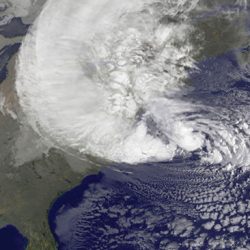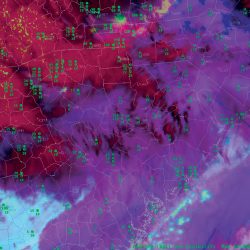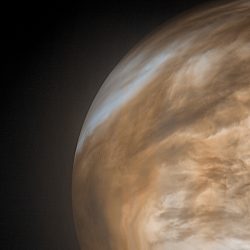Dodging Cyclones, Studying Monsoons
A UW–developed portable weather lab journeyed for two months and 22,000 miles to the Philippine Sea and back during the heart of monsoon season.
The lab, known as SPARCLET, traveled aboard the research vessel Thomas G. Thompson (pictured above) to learn more about how pollutants and turbulent conditions in the western Pacific affect the region and influence global weather. An international crew captured oceanographic measurements and detailed atmospheric observations.
SPARCLET is the smaller of two mobile labs developed by the UW’s Space Science and Engineering Center (SSEC), and SPARC stands for SSEC Portable Atmospheric Research Center. (“LET” is a diminutive.) In the Philippine Sea, SPARCLET took atmospheric measurements of aerosols, which are found in high concentrations there and are thought to affect weather patterns.
The experiment ran from August to October 2018 and was designed to observe conditions during the Asian summer monsoon. As the crew members collected data over several hundred nautical miles, they were twice rerouted when tropical cyclones passed nearby.
“The resulting ocean churning from the storm gave us a chance to observe the air and sea conditions in its wake,” says Coda Phillips ’16, MSx’20, who was part of the deck crew for one month of the journey. The project is a part of a larger NASA mission, which will include ground-based instruments, weather satellites, and high-altitude aircraft.
“This project offers a great chance to bridge science and applications into hardware development,” says SSEC scientist Bob Holz ’98, MS’02, PhD’05. “The development of this instrument took years to complete and expertise from different fields, but we’re excited to take part in this campaign.”
Published in the Summer 2019 issue




Comments
No comments posted yet.